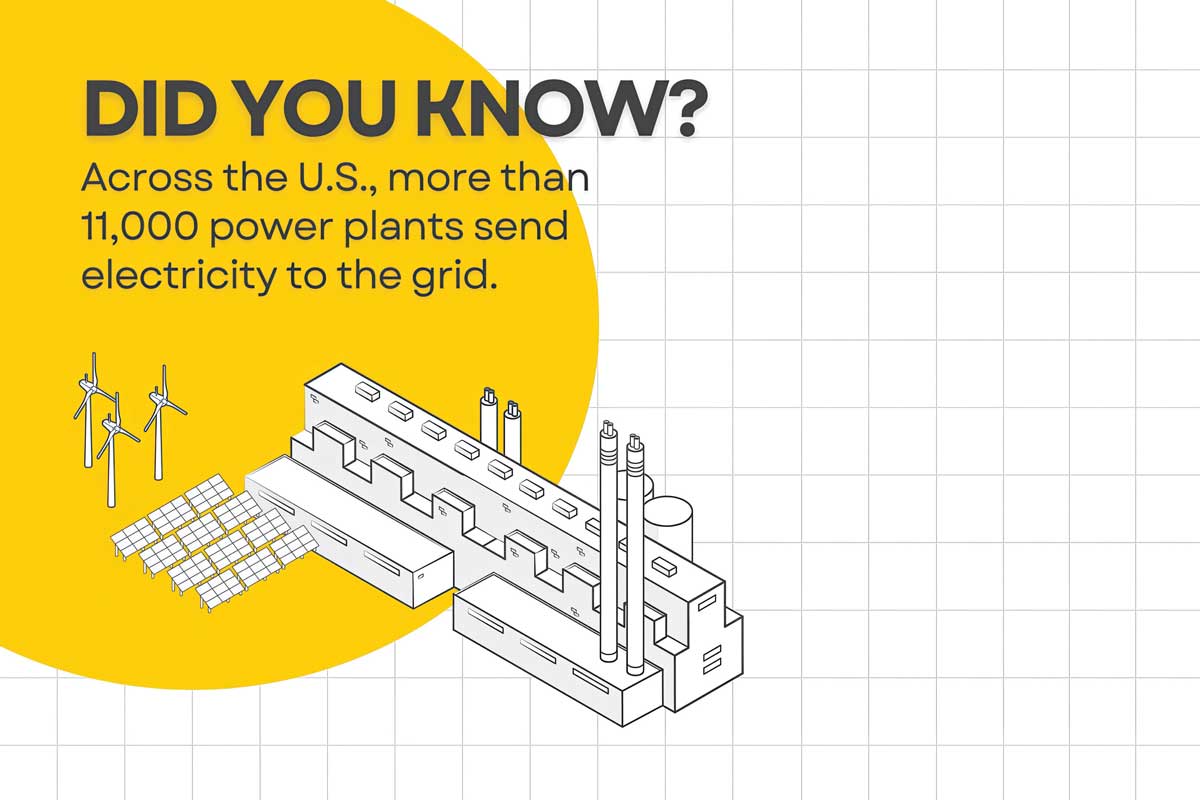Electricity plays an essential role in everyday life. It powers our homes, offices, hospitals and schools. We depend on it to keep us warm in the winter (and cool in the summer), charge our phones, and binge watch our favorite TV shows. If the power goes out, even briefly, our lives can be disrupted.
The system that delivers your electricity is often described as the most complex machine in the world, known as the electric grid.
What makes it so complex? We all use different amounts of electricity throughout the day, so the supply and demand for power are constantly changing. For example, we typically use more electricity when we start our day, and in the evenings, when we cook dinner and use appliances. Severe weather and other factors also impact how much electricity we need.
The challenge for electric providers is to plan for, produce, and purchase enough electricity so it’s available exactly when we need it. Too much or too little electricity in one place can cause problems. So, to make sure the whole system stays balanced, the electric grid must adjust in real-time to changes and unforeseen events.
At its core, the electric grid is a network of power lines, transformers, substations, and other infrastructure that span the entire country. But it’s not just a singular system. It’s divided into three major interconnected grids: the Eastern Interconnection, the Western Interconnection, and the Electric Reliability Council of Texas. These grids operate independently but are linked to transfer electricity between regions when backup support is required.
Within the three regions, seven balancing authorities known as independent system operators or regional transmission organizations monitor the grid, signaling to power plants when more electricity is needed to maintain a balanced electrical flow. ISOs and RTOs are like traffic controllers for electricity.
The journey of electricity begins at power plants—factories that produce electricity using various energy sources, like natural gas, solar, wind, and nuclear energy. Across the U.S., more than 11,000 power plants deliver electricity to the grid.
Magic Valley Electric Cooperative receives power from our generation and transmission co-op. We work closely with it to provide electricity at the lowest cost possible. Being part of a G&T benefits members like you by placing ownership and control in the hands of your co-op, prioritizing affordability and reliability, supporting local economic development, and fostering a sense of community.
We need a transportation system to get the electricity from power plants to you.
High-voltage transmission lines act as the highways for electricity, transporting power over long distances. Massive towers support these lines and travel through vast landscapes, connecting power plants to electric substations.
Substations are like pit stops along the highway, where the electricity voltage is adjusted. They play a crucial role in managing power flow and ensuring electricity is safe for homes and businesses.
Once the electricity is reduced to the proper voltage, it travels through distribution power lines, like the ones you typically see on the side of the road. Distribution lines carry electricity from substations to homes, schools, and businesses. Distribution transformers, which look like metal buckets on the tops of power poles or large green boxes on the ground, further reduce the voltage to levels suitable for household appliances and electronic devices.
After traveling through transformers, electricity reaches you—to power everyday life.
We’re proud to be your local, trusted energy provider. From when it’s created to when it’s used, electricity travels great distances to be available at the flip of a switch. That makes the electric grid our nation’s most complex machine—and one of our nation’s most outstanding achievements.


